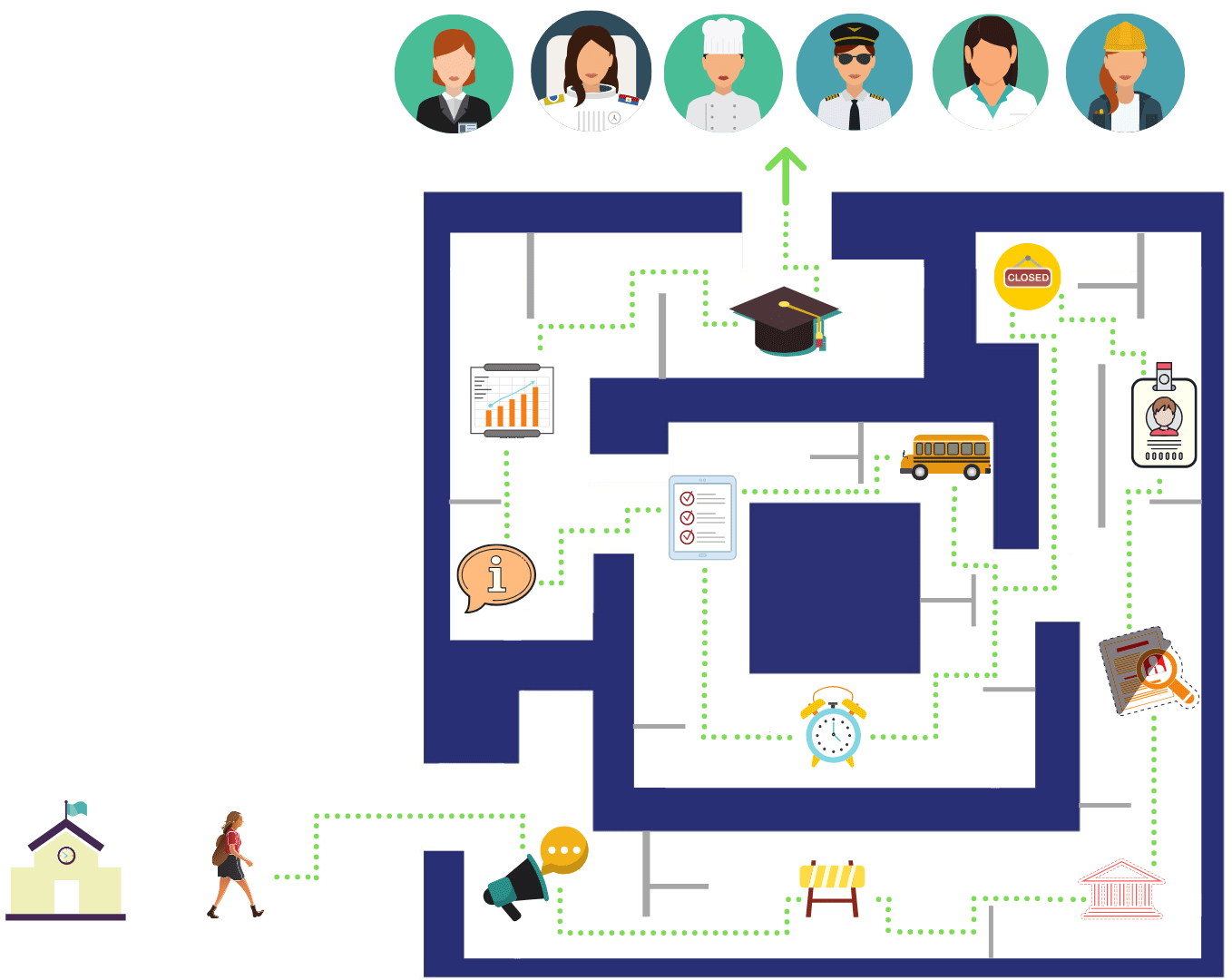Virginia Students Need Your Help
At Virginia Ed Strategies, our mission is focused on partnerships and programs that help ensure a strong K-12 educational system, a prepared future workforce, and a thriving global economy for Virginia. Exhibiting a mission committed to the cultivation of a variety of best practices that align K-12 education with employer and community needs, we are dedicated to helping schools, businesses, and other community stakeholders prepare students for life and careers. In order to make this possible, we strive to offer a vast array of research-based education, talent pipeline, and community services customized to meet the unique needs of our partners in every corner of the state from rural to urban, small and large, and everything in between. But we can’t do it without your support!!
As the need for skilled labor continues to rise, now is the time to provide access to resources and opportunities that will equip our students to become successful members of tomorrow’s workforce.
Virginia Ed Strategies recognizes that high-quality work-based learning (WBL) and career and technical education (CTE) programs are key to helping students succeed not only academically, but also to ensuring they obtain well-paying jobs in the future. Your donation enables us to design and implement WBL programs that address workforce development needs and equip students with the skills necessary for success in college and careers.
Thank you for supporting our efforts to increase access to learning opportunities for students that lead to personal fulfillment and economic success.
Scroll down to learn about the barriers students face on the pathway from education into careers. Your contribution will be used to create solutions for each of these challenges!
Navigating the Maze
The Challenge
There’s often a disconnect between what students learn in school and what they will need to do in the workplace. Currently, 87% of Virginia students graduate from high school in 4 years, but only 52% graduate from high school college and career ready. Add to this the likelihood that 65% of children entering elementary school today will ultimately have Jobs that don’t yet exist and we begin to wonder how schools can adequately prepare students for the Jobs of tomorrow. The first step is recognizing the challenges schools and students encounter on the pathway from education into the workforce.

A lack of equitable access to work-based learning limits the career prospects and economic mobility of millions of youth and adults. It also prevents them from becoming part of the pipeline of skilled workers employers need to help spur local, state, and national economic growth.

%
Calling All Skilled Workers
Eighty percent of employers reported having difficulty finding workers, with 70% identifying skills shortages as the reason.


More Is Needed
CTE & work-based learning is key to make students college and career ready. On average, CTE courses comprise only 2.5 of the credits high-school students earn.


%
Changing Perception
75% of Americans believe it is easier to be successful with a college degree than without one. Yet, the US has 30 million jobs that pay $55,000 per year and do not require a bachelor’s degree.


%
Missing Soft-Skills
60% of employers believe that today’s applicants lack soft skills plus do not have the ability to think creatively or critically.


%
In Need of Opportunities
88% of employers surveyed reported that hiring an individual who participated in work-based learning ranked as a top indicator of success. However, only 19% of teenagers indicated access to WBL opportunities.


%
Finding Business Partners
1/3 of employers say they never communicate with education providers. Those that do often shy away from WBL options due to concerns about time, pay, and liability making it difficult for students to access much-needed opportunities.


%
Transportation Concerns
70% of school districts nationwide cite transportation as a barrier for students wishing to pursue work-based learning opportunities.


%
Time Management
84% of school districts report that students lack time in their current schedules to participate in CTE programs.


%
Industry Credentials
Industry-recognized credentials validate an individual’s knowledge and skills in a given occupation. Yet research reveals a misalignment between what is offered in high schools and what businesses need – studies suggest that only 19% of the credentials earned by K-12 students are demanded by employers in the U.S.


%
Access To Information
65% of districts say negative perceptions of CTE from parents and students is a barrier to student participation in these programs. Simultaneously, 54% of districts report that they use up-to-date labor market information to a moderate extent or less when deciding what CTE programs to offer.


Schools are in need of technology that will enable them to collect and share quantitative and qualitative data on students’ WBL experiences with key stakeholders, including employers, district leadership, students, and parents


%
Impact On Graduation
CTE students have a graduation rate of 93% compared with a national average of 82%. They also enroll in post-secondary education programs at higher rates than their peers who attend comprehensive academic programs.





















